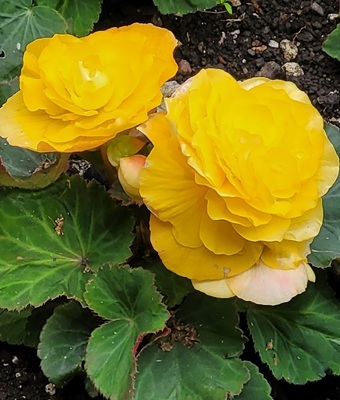Flower Properties
| Property | Value |
|---|---|
| English Name | Tuberous Begonia |
| MainColor | Yellow |
| PlantType | |
| Growth Type | |
| Season | June |
| ImageUrl | Begonia-001 |
| Photographer | DP |
| Location | |
| Human Toxicity |
Flower Details
Description
A popular ornamental plant grown for its bright, showy flowers in a wide range of colours. These hybrids are cultivated in pots, beds, and hanging baskets.
Distribution
Cultivated worldwide as ornamentals. Not naturally occurring in the wild, as they are hybrids developed from South American species.
Medicinal/Other Uses
Not significant in medicine, though some begonia species are used in folk remedies for skin conditions and digestive problems.
Edibility
Not edible — tubers and roots are toxic. Leaves and flowers are sometimes used in very small quantities as garnishes, but caution is advised.
Human Toxicity

Contains insoluble oxalates, especially in roots and tubers, which can cause irritation, nausea, and vomiting if eaten in large amounts.
Pet Toxicity

Toxic to cats and dogs if tubers are chewed — causes drooling, vomiting, difficulty swallowing.
Active Compounds
Oxalic acid and calcium oxalate crystals.
